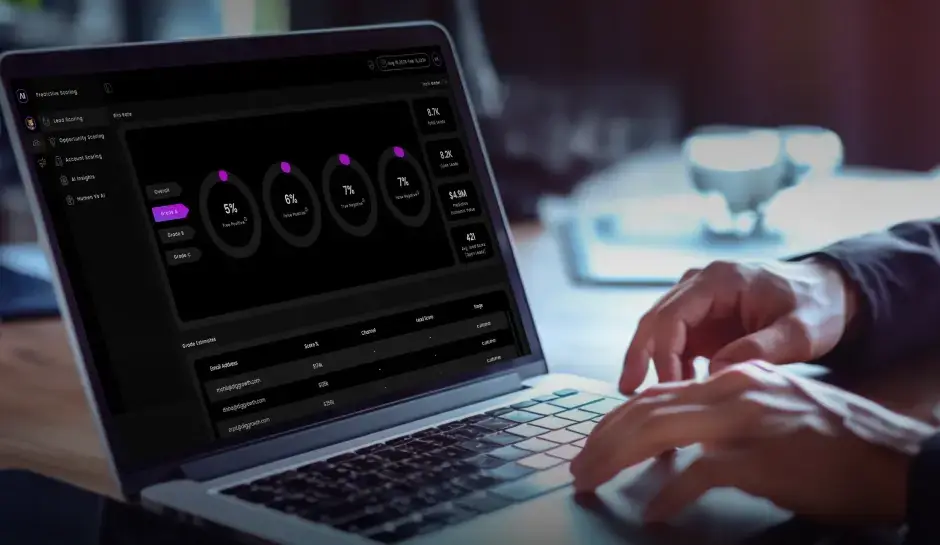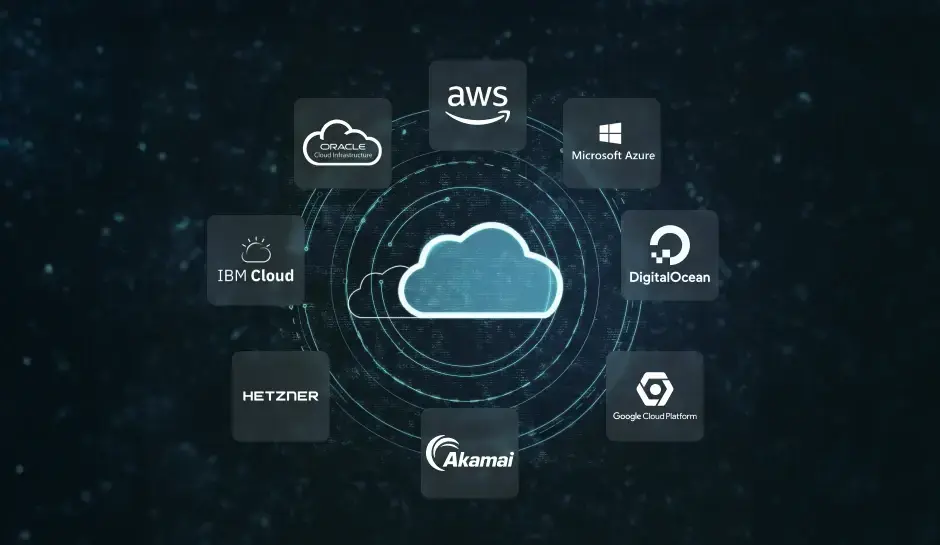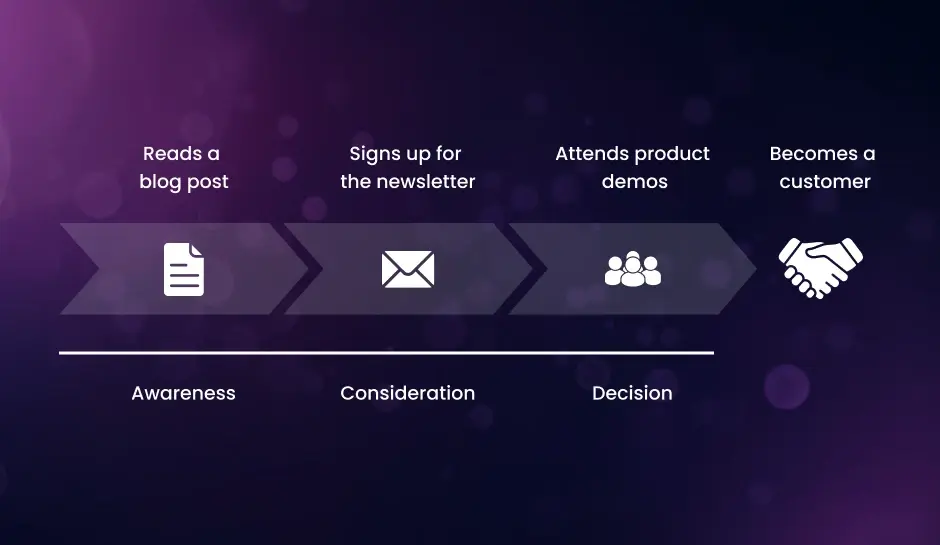
Social Media Analytics : A Requisite Tool For Optimizing Success
Social media analytics is the key to understanding your audience and connecting with them like never before. In this blog post, we've talked about how insights from analytics can elevate your engagement and refine your content strategy for unparalleled success.
“Don’t use social media to impress people, use it to impact people.” – Dave Willis
In the electrifying world of social media analytics, data transforms into insights and engagement becomes an art form. In a place where hashtags trend, memes spread like wildfire, and conversations never cease, understanding your audience is the key to success.
Being part of this fascinating space called marketing, we’ve all been there – crafting posts with care, hoping for that rush of likes and comments. But have you ever wondered how to crack the code behind social content? How to ensure your posts resonate like a harmonious chord? The answer is social media analytics.
From metrics to insights, social media analytics helps you understand who your audience truly is with the help of a social media dashboard. In this blog post, we will dive headfirst into the heart of social media analytics and explore how you can leverage it to understand your audience and create content that connects with them on a deeper level.
With social media ad spending expected to reach 300 billion U.S. dollars in 2024, the message to marketers is clear: elevate your game.
But, even with careful planning, visually appealing content, engaging copy, and well-thought-out hashtags, many social media campaigns fall flat. Despite investing time and resources, the outcome often reveals a marketing effort that doesn’t connect.
The aftermath of a failed campaign goes beyond disappointment, impacting the core of a business. It damages brand credibility and risks alienating the audience, with tangible effects on the bottom line.
So, how can marketers ensure their next campaign resonates? The answer lies in social media analytics. This powerful tool offers a proactive solution to unpredictable campaign outcomes.
Social media analytics grant insights into audience behavior, content effectiveness, and campaign performance, simplifying the understanding of preferences and paving the way for future success.
For a successful social media campaign, understanding metrics is like having a map. These metrics show how your content connects with the audience, guiding your strategy for better results.
What is Social Media Analytics?
With social media analytics being an art form, marketing analytics platforms then become your proverbial stage. Now, how do you know if your strategies and tactics are wowing the audience or just falling flat? That’s where social media analytics steps in. It’s not just about likes and shares, it’s the key to deciphering your digital impact.
And it works only when you look closely at the Marketing data tapestry to see what’s being collected by social media analytics. Here’s a look:
- Engagement Metrics
They tell you how well your content is resonating. Likes, shares, and comments paint a picture of your audience’s reactions. Then there’s reach and impressions – how many people saw your content and how often?Conversion and Click-through Rates
These are the moments when your audience willingly steps into your world. Clicking on a link, signing up for a newsletter – this is where it gets better. .Demographic and Psychographic Data
It tells you who your audience is, where they’re from, and what interests them. This is where you get the clearest picture of the behaviors and preferences of your audience.
What Are Social Media Metrics?
Social media metrics are essential to your online presence, providing valuable insights into your social media campaign content. They play a key role in assessing campaign performance and impact. Here are some essential metrics that serve as your campaign’s pulse:
Engagement: How much interaction does your content receive (likes, comments, shares)
- Reach:
- Impressions:
- Conversions:
Total unique users viewing your content
How many times your content is displayed
The actions you want users to take (e.g. sign-ups, purchases)
6 Most Popular Social Media Analytics Tools in 2024
Understanding social media metrics helps evaluate campaign effectiveness. Marketing Analytics tools streamline the process, translating data into actionable insights to optimize future strategies. Now, let’s bridge the gap from metrics to practical application by delving into some popular analytics tools.
- Google Analytics
- Hootsuite Analytics
- Sprout Social
- Buffer
- HubSpot
- BuzzSumo
Google Analytics is a powerhouse when it comes to web analytics. While primarily focused on website performance, it provides valuable data for social media marketers. Track referral traffic, user behavior, and conversion rates to understand how your social media efforts contribute to online success.
Renowned for its social media management capabilities, Hootsuite Analytics offers detailed insights into your social media performance. Monitor engagement metrics, follower growth, and the effectiveness of your content. Hootsuite provides a centralized hub for managing and measuring your social presence.
Sprout Social is an all-in-one social media management tool that goes beyond scheduling. Its analytics features provide comprehensive data on audience engagement, hashtag performance, and post effectiveness. The platform also facilitates collaboration and reporting for a streamlined social strategy.
Buffer is not just a scheduling tool; it also packs a punch in the analytics department. You can track the performance of your posts, measure engagement, and understand audience behavior. Buffer’s analytics help you refine your content strategy based on real-time insights.
HubSpot provides a robust suite of tools for inbound marketing, and its social media analytics are no exception. You can track the performance of your social media efforts, measure lead generation, and align your social strategy with your broader marketing goals.
BuzzSumo is a content discovery and analytics tool that helps you understand what content resonates in your industry. You can identify trending topics, analyze competitor content, and refine your social media strategy based on data-driven insights.
Pro Tip- Social media marketing analytics serves as a vital tool for marketers despite challenges in data accuracy and resource constraints. This purpose-driven journey involves deriving actionable insights, aligning strategies with business goals, and simplifying complexities.
How to Track Social Media Analytics?
It is important to recognize that a successful social media strategy requires more than just posting content—it’s about understanding how your audience engages and tailoring your approach accordingly. Follow these steps to monitor and interpret the data that fuels your digital strategy efficiently.
Choose the Right Social Media Analytics Tool
Assess your specific needs before diving into the analytics tool pool. Consider your target audience, the platforms you use, and your campaign goals. For instance, tools like Instagram Insights or Pinterest Analytics might offer more tailored insights if you’re heavily invested in visual content.
If your strategy spans multiple platforms, a comprehensive tool like Hootsuite might be the way to go. The key is to align the tool’s features with your unique requirements to ensure a seamless tracking experience.
- Setting Up Tracking Parameters
- Utilize UTM Parameters for Campaigns
- Explore Platform-Specific Insights
- Establish Monitoring Routines
- Interpret Data Trends
- Benchmark Against Goals
- Embrace Continuous Learning
Lay the groundwork for effective tracking by clearly defining what you want to measure. Establish tracking parameters aligning with your overarching goals, whether website clicks, post shares, or lead conversions. This precision ensures that your analytics efforts are comprehensive and directly contribute to strategic decision-making.
Boost the effectiveness of your campaigns by incorporating UTM parameters. This practice provides granular insights into campaign-specific data. It allows you to track the performance of different marketing channels, helping you allocate resources more efficiently.
Social media platforms offer a treasure trove of native analytics tools. Use Facebook Insights, Twitter Analytics, and Instagram Insights to gain platform-specific insights. These tools offer demographic data and provide a nuanced understanding of user behavior within the platform’s ecosystem.
Building a routine for social media analytics is crucial. Regular daily, weekly, or monthly monitoring provides a consistent pulse on your performance. It enables you to identify trends, capitalize on successes, and swiftly address deviations from your strategy.
Analytics is not just about numbers, it’s about unraveling narratives. Analyze trends within your data to uncover the stories it tells. Recognize shifts in engagement patterns, changes in audience demographics, or the impact of specific content types. A narrative-driven approach allows you to make data-informed decisions that resonate with your audience.
Regularly compare your analytics against predefined goals. Whether your focus is on brand awareness, engagement rates, or lead generation, aligning your tracking efforts with specific objectives provides a clear measure of success and directs your strategy toward tangible outcomes.
As the social media landscape evolves, so should your tracking strategy. Stay informed about updates in analytics tools, emerging industry trends, and shifts in user behavior. Continuous learning keeps your tracking methods relevant but also positions you to adapt to the ever-changing digital environment proactively.
Challenges in Implementing Social Media Analytics
- Data Accuracy and Quality
- Resource Constraints
- Interpreting Complex Metrics
- Integration with Overall Strategy
Challenge: Inaccurate or incomplete data can hinder the reliability of social media analytics. This challenge arises from discrepancies in tracking, data collection methods, or platform changes.
Solution: Implement robust data validation processes and regularly audit data sources. Ensure that tracking codes and tags are correctly implemented, and stay informed about any updates or changes in social media platforms.
Challenge: Small businesses or teams with limited resources may struggle to allocate time and personnel for comprehensive social media analytics.
Solution: Prioritize analytics efforts based on business goals. Leverage automation tools for routine tasks, and consider investing in training to empower existing team members to handle analytics effectively.
Challenge: The complexity of certain social media metrics can be overwhelming, especially for those new to analytics. Understanding and interpreting data may pose a significant challenge.
Solution: Provide training or seek expertise in analytics interpretation. Simplify reporting dashboards for easier comprehension, focusing on the most critical metrics aligned with business objectives.
Challenge: Ensuring that social media analytics align seamlessly with the broader business strategy can be challenging, particularly when goals and metrics are not interconnected.
Solution: Establish a clear connection between social media metrics and business objectives. Regularly revisit and adjust analytics strategies to ensure alignment with evolving business goals.
How Social Media Analytics Helps to Understand Your Audience
Social media analytics gives a whole new meaning to ‘know thy customer’. Here’s how:
Decoding Data
Social media analytics takes the mystery out of your audience’s online behavior and preferences. Instead of crossing your fingers and hoping for engagement, Marketing analytics provide you with tangible data – likes, shares, comments – that paints a vivid picture of what resonates.
- Tailoring Your Content
- Deciphering Insights
- Crafting Your Strategy with Data
- Building Relationships Through Understanding
Social media analytics makes you a powerful content creator. By understanding your audience’s demographics, interests, and online habits, you can craft content that speaks directly to them.
Likes and shares aren’t just fleeting gestures, they’re subtle hints from your audience. Analytics transforms them into insights that guide your strategy. You’ll uncover which posts ignite excitement and which ones leave your audience indifferent.
Social media analytics is your flashlight, illuminating the path of your social media strategy. By tracking trends and patterns, you can make informed decisions. For instance, if videos consistently receive more engagement than images, you know where to invest your creative efforts.
Ultimately, social media analytics help you build meaningful relationships with your audience. It’s about more than just numbers, it’s about connecting with individuals who resonate with your message. When you understand their preferences and habits, your interactions become genuine conversations.
Audience Segmentation and Influence Measurement
What is Audience segmentation?
Segmenting audiences is a crucial aspect of social media analytics. By dividing your target audience into smaller and more specific segments, you can gain deeper insights into their demographics, interests, and behaviors. This enables you to tailor your marketing strategies to effectively engage and connect with each segment.
There are various methods and tools available for audience segmentation in social media analytics. These include analyzing data such as age, gender, location, language, and interests. By utilizing these tools, businesses can better understand their audience and create targeted content that resonates with them.
Audience segmentation enhances marketing strategies by allowing businesses to create personalized content and offers. By understanding the unique needs and preferences of different segments, businesses can tailor their messages to effectively engage each segment and improve their overall marketing performance.
Influence Measurement
Influence measurement plays a significant role in social media analytics. It is crucial to identify and measure the influence of social media users or influencers, as they have the power to impact and shape the opinions and behaviors of their followers.
There are various techniques for measuring influence in social media analytics. These include analyzing metrics such as follower count, engagement rate, reach, and content virality. By evaluating these factors, businesses can identify influential users or influencers within their target audience.
Utilizing influence measurement data is essential for effectively targeting audiences. By aligning your marketing efforts with influential users or influencers, you can reach a larger and more engaged audience. Collaborating with these individuals can help amplify your brand’s message and increase brand awareness, ultimately driving better results for your social media campaigns.
Reporting and Optimization
Reporting and optimization are key components of a successful social media analytics strategy. By effectively reporting and optimizing your social media efforts, you can improve your overall performance and achieve better results. In this section, we will explore the importance of social media reporting and
How to leverage analytics for optimization
- Social Media Reporting
- Data Collection
Creating comprehensive social media reports is essential for monitoring and evaluating the effectiveness of your social media campaigns. These reports provide valuable insights into your audience engagement, reach, and overall performance. Here are some essential components to consider when creating a social media report:
Gather data from various social media platforms and tools to analyze your performance.KPIs and Metrics
Define key performance indicators (KPIs) and metrics that align with your business objectives.Visualizations
Present your data and insights in visually appealing charts, graphs, and tables for better understanding.Analysis and Insights
Interpret the data to extract meaningful insights and identify areas of improvement.Recommendations
Provide actionable recommendations based on your analysis to optimize your future social media campaigns.
- Social media analytics transforms data into insights for effective audience engagement.
- Failed campaigns risk brand credibility; analytics offers a proactive solution.
- Metrics like engagement and conversions are crucial in guiding successful campaigns.
Tips for presenting data and insights effectively
Focus on the Story
Present your data in a narrative form to help stakeholders understand the context and significance.Visualize Data
Use visual elements to present your data effectively and make it easier to comprehend.Keep it Simple
Avoid overwhelming your audience with excessive data and focus on the most important information.Provide Context
Explain the relevance of the data and how it impacts your business goals.
Using Social Media Analytics for Optimization
Social media analytics can be a powerful tool for optimizing your marketing strategies. By analyzing the data collected, you can identify areas for improvement and make data-driven decisions. Here’s how you can leverage social media analytics for optimization:
Leverage Insights
Use the insights gained from analytics to understand your audience, their preferences, and their behavior.Analyze Data:
Dive deep into the data to identify trends, patterns, and areas of improvement.Identify Opportunities
Discover opportunities for reaching a wider audience, improving engagement, or enhancing your content strategy.Optimize Campaigns
Utilize the insights gained to optimize your social media campaigns, targeting specific demographics, or testing different messaging strategies.Integrate Analytics
Incorporate social media analytics into your ongoing business processes to continuously optimize your strategies.
By integrating social media analytics into your optimization efforts, you can make informed decisions that drive better results and maximize your return on investment.
Trends and Innovations in Social Media Analytics
Marketers increasingly turn to advanced AI-driven analytics tools to address data interpretation, integration, and scalability complexities. These tools offer in-depth insights into user behavior and preferences and incorporate predictive analytics, enabling businesses to anticipate trends and stay ahead of the curve.
The evolving landscape places a keen focus on privacy considerations, prompting analytics tools and platforms to prioritize robust data protection measures and compliance.
Additionally, the rising significance of influencer analytics addresses challenges related to measuring impact and ROI in influencer collaborations. This dynamic evolution underscores the importance of collecting data and strategically understanding its implications, empowering businesses to refine their social media strategies effectively.
Wrapping Up
Social media analytics isn’t just about charts and graphs, it’s about diving deep into the sea of data to understand the people who interact with your content. It’s the key to creating content that resonates, conversations that matter, and a digital presence that speaks volumes. So, embrace the power of analytics and witness your social media engagement going through the roof.
Social media analytics serves as a vital tool for marketers despite challenges in data accuracy and resource constraints. This purpose-driven journey involves deriving actionable insights, aligning strategies with business goals, and simplifying complexities.
Ultimately, social media analytics becomes a strategic guide, optimizing resources and leveraging trends for impactful digital approaches. The goal is simple—seamless integration of analytics into a holistic business strategy, marked by resilience, growth, and meaningful impact.
Ready to get started?
Increase your marketing ROI by 30% with custom dashboards & reports that present a clear picture of marketing effectiveness
Start Free Trial
Experience Premium Marketing Analytics At Budget-Friendly Pricing.

Learn how you can accurately measure return on marketing investment.
Additional Resources
The Future of Marketing: How Predictive Lead and Account Scoring is Changing the Game
Can we, in this incredible marketing landscape driven...
Read full post postCloud Wars: A Comparative Analysis of Leading Cloud Vendors
How many companies are using cloud computing? Around...
Read full post postContent Marketing Attribution: Tracking Content Impact Across the Customer Journey
So, you've poured your heart into crafting the...
Read full post postFAQ's
Social media analytics refers to the process of collecting, analyzing, and interpreting data from social media platforms to gain insights into various aspects of social media performance.
a. Descriptive Analytics: Involves summarizing historical data to understand past trends and performance on social media platforms. b. Diagnostic Analytics: Focuses on analyzing data to identify the reasons behind past performance, helping to uncover patterns and correlations. c. Predictive Analytics: Utilizes statistical algorithms and machine learning techniques to forecast future trends and outcomes based on historical data. d. Prescriptive Analytics: Provides actionable insights and recommendations to optimize future social media strategies based on the analysis of past and current data.
Social media analytics is utilized by a variety of individuals and organizations, including: Marketing Professionals: To measure the effectiveness of social media campaigns and understand audience behavior. Business Owners: To assess brand perception, monitor competitors, and make informed decisions. Social Media Managers: To track engagement, analyze content performance, and refine social media strategies.
An example of social media analysis could be monitoring the sentiment around a brand during and after a product launch. By using sentiment analysis tools, businesses can assess whether the overall online sentiment is positive, negative, or neutral.
 Akanksha Dass
Akanksha Dass 

